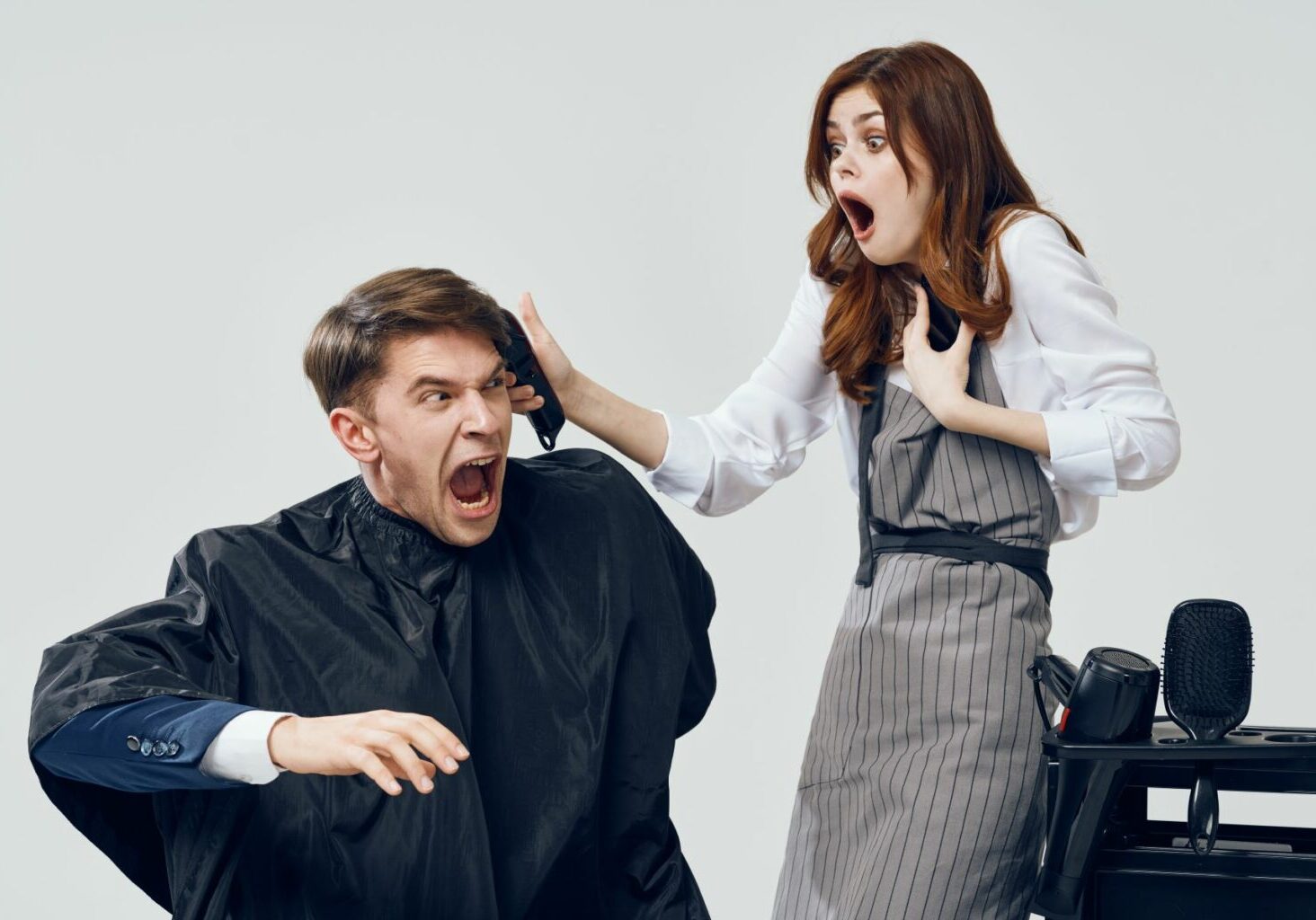Barber Problems: Top 5 Hair Salon Lawsuits You Need to Know About
Last Updated: July 26, 2024

It’s hard to imagine barber problems and hair salon lawsuits when barbershops and salons, themselves, have always been places of community.
After all, when it comes to culture, confidence, and craft, the barbershop is CEO. Barbering has been shaping men since Tutankhamun–no cap. And it’s because of the people and the place. Coming to the barbershop means catching up with friends, getting some unofficial therapy, and glowing-up with a new cut or style. No wonder some scholars call beauty and barbershops “sanctuaries.”
But not everyone is catching the feels at the salon. Some people are after the money. One slip-up, and some clients are speed-dialing their attorneys. Fortunately for you, you can watch for and even prevent common barber problems. Avoiding these mistakes can help you dodge unnecessary hair salon insurance claims or hair salon lawsuits.
Top 5 Hair Salon Lawsuits
1. Slips and Falls
When you cut hair, where does it fall? On the floor. When you spill or spray a product, where does it go? On the floor. And if you don’t clean it up, your client could be on the floor, too.
Suing a hair salon when you trip may sound extra. But these lawsuits against hair salons happen all the time. In fact, slips and falls are one of the most common barbershop and hair salon lawsuits. So don’t let your clients eat it on your dirty floor. Get that broom, get that mop, and keep it clean.
Already cleaning between clients? If your client is chilling in the chair waiting for texture or color to set, that’s another good time to do a sweep. Get tips for maintaining clean, dry floors and other ways to avoid slips and falls here.
2. Overprocessed Hair and Burns
Your client wants to look snatched. Dry, brittle, and damaged hair does not go with that French crop. Unfortunately, inappropriate or excessive dye, bleach, and heat application can cause overprocessed hair and burns.
You’ve got to do what you can do to keep your client’s hair healthy. Protect your clients, their locks, and your reputation by:
- Spacing out treatments.
- Performing one service at a time.
- Checking the foils
- Avoiding or minimizing heat.
- Catering to hair types and textures.
3. Scalp or Eye Injuries
Those chemicals in your hair dyes and texturing products? Highkey harsh. Leave them on for too long, and your client’s scalp could suffer permanent hair loss. Let the dye run into your client’s eye, and they could be looking at irritation, conjunctivitis, chemical burns, and even corneal damage. Add a chemical allergy to the mix, and you’re even more likely to face hair salon lawsuits.
4. Cuts
With a razor or scissors in hand, it’s easy to accidentally nick a client’s neck, ear, or face. But there are a few ways you can prevent cuts:
- Coach your clients not to fidget, move suddenly, or chew gum during their cut.
- Use a barrier, like a comb, between the hair and skin when you can.
- Hold the skin taut.
- Watch out for folds and wrinkles in the skin.
- Keep your clippers and instruments clean, sanitized, and sharp.
5. Viruses or Infections
TFW you get pimply bumps after your pro shave. Pass.
While nicks and cuts are portals to infections, unsanitary instruments are their vehicles. That’s one of many barber problems and hair salon lawsuits to avoid.
Accordingly, let’s put some extra emphasis on keeping your tools squeaky clean. Clean, sanitize, disinfect, and oil between every client. Then keep your clean tools in a clean container. When your client walks away from the chair without folliculitis, tinea captis, herpes, or impetigo, they’ll thank you for understanding the assignment.
Keep your shaves close but your insurance closer.
You’ve got enough barber problems and hair salon lawsuits to worry about. With WellnessPro Insurance, you can share the risks of owning a barbershop or hair salon business with experienced claims pros. Learn about our hairstylist and barber insurance here.
